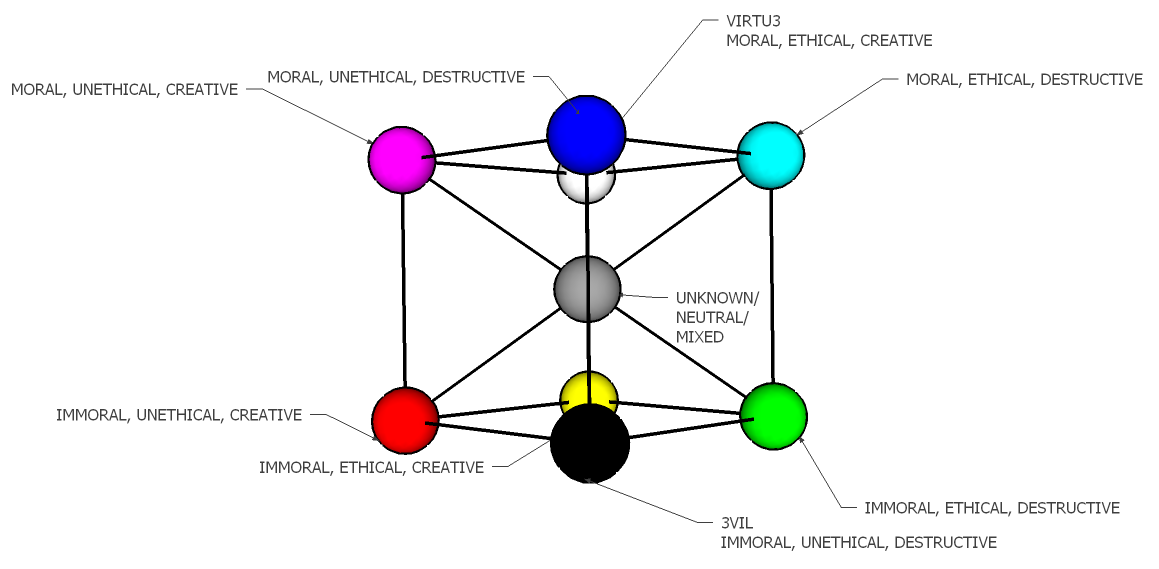Moral Absolutism
Those who believe that morality is all that matters are moral absolutists. For a moral absolutist, ethics and consequences are both irrelevant. An action can be judged as wholly good as long as the intentions that led to the behavior are good. Destructive or unethical behavior is justified and wholly excused by good intentions. Moral absolutists totally reject ethical egoism and consequential utilitarianism as having any weight, even as secondary or side constraints.This figure shows how a moral absolutist orients VIRTU3-space. Any of the four corners on the top are considered good by a moral absolutist. All four corners on the bottom would be viewed as bad.
 |
| Moral Absolutism |
Ethical Absolutism
Those who believe that ethics is all that matters are ethical absolutists. For an ethical absolutist, morals and consequences are both irrelevant. An action can be judged as wholly good as long as the behavior did not violate the ethical rights of anyone. Immoral or destructive behavior is justified and wholly excused by proper ethics. Ethical absolutists totally reject personal morality and consequential utilitarianism as having any weight, even as secondary or side constraints.This figure shows how a ethical absolutist orients VIRTU3-space. Any of the four corners on the top are considered right by an ethical absolutist. All four corners on the bottom would be viewed as wrong.
 |
| Ethical Absolutism |
Consequential Absolutism
Those who believe that results are all that matters are consequential absolutists. For a consequential absolutist, morals and ethics are both irrelevant. An action can be judged as wholly good as long as outcomes are productive. Immoral or unethical behavior is justified and wholly excused by good results. Consequential absolutists totally reject personal morality and ethical egoism as having any weight, even as secondary or side constraints.This figure shows how a consequential absolutist orients VIRTU3-space. Any of the four corners on the top are considered constructive by a consequential absolutist. All four corners on the bottom would be viewed as destructive.
 |
| Consequential Absolutism |

No comments:
Post a Comment